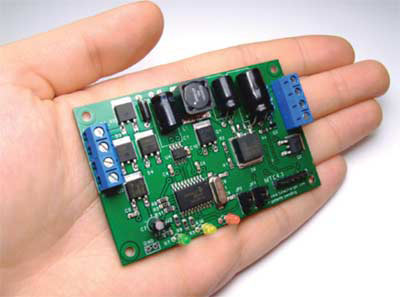What role to choose?
Any embedded system is teamwork of three different sets of people including hardware engineers, software engi-neers and application domain experts. You can look for a job under any one of these broad categories. If you are comfortable in the hardware domain, you will be assigned responsibility for hardware platform and module prototyping, debugging and testing. Also, you have to ensure compliance with standards and product specifications and initiate design changes as necessary.
As a software engineer, you can start as an embedded systems programmer with responsibility of tasks like analysis and optimisation of embedded software for the targeted real-time operating system (RTOS). Your activities may include developing installable and built-in device drivers, kernel modifications and embedded application.
You can begin as a wireless protocol engineer if you seek to explore the application domain. You will be responsible for the development, integration and testing of various protocols within an embedded firmware stack used in mobile devices.
Who’s hiring?
Some of the major recruiters in this sector are Texas Instruments (TI), STMicroelectronics, Intel, Freescale Semicondcutor, Honeywell, Delphi, Huawei, Tata Elxsi, Mistral, LG Electronics, Samsung, Microchip Technology, eInfochips, Serveen, ATS, Sankhya Technologies, Bluefont, Intoto, Wind River and DCM Technologies.
“In the embedded industry, the jobs exist in the early phases of product life cycle like design, verification and validation, architecture support, functional test and rapid control prototyping,” adds Solaikutty Dhanbal, manager, NI India Academics.
Marc McComb, academic program sales engineer, Microchip Technology Inc., elaborates, “As new technologies emerge, embedded systems are being integrated into more products. Therefore engineering students with knowledge related to embedded systems will find that their skills will become increasingly valuable to a number of different sectors including, but not limited to, automotive, medical, consumer electronics, aerospace, military, and much more. Also, the current trend in the industry seems to be expanding the applications that utilise embedded systems. With India’s wealth of engineering talent, I believe manufacturers will take advantage of this and continue to hire from this region.”
“The opportunities for embedded professionals exist in product-related companies, software companies which do design for product companies elsewhere and research field as well,” Kumaran informs.
[stextbox id=”info”]
“Microchip looks for certain skills on a case-by-case basis, for a particular focus. For example, some applications are more software-centric, such as our touch-sensing technologies. In this case, a priority could be placed on a candidate’s abilities to create efficient and effective firmware, while still being able to understand how their software will interact with the rest of the system.”
— Marc McComb, academic program sales engineer, Microchip Technology Inc.
[/stextbox]
He points out, “There is a need of embedded engineers across verticals in R&D, automotive, telecom infrastructure to engineer the LTE devices, base stations etc. Apart from these, embedded engineers are much in demand in the consumer space as well as in the gaming industry. Android is one of the fastest growing platforms so there is a plenty of scope for embedded engineers here too.”
Newer tools that make it easier to utilise embedded systems have definitely created new markets. Such new markets include energy harvesting, lighting, intelligent power systems, human interface such as touch-screen controllers, and many more.
How to get the entry pass?
Let’s delve a little deeper to know the basic criteria for entry. To work in this field, diploma holders, engineering (as well as science) graduates, postgraduates and even doctorates with the background of electronics/electrical engineering or computer science may try their luck here.
Now coming to entry-level recruitment, it demands some pre-defined skillsets. On the software side, it is mandatory to have the basic knowledge of ‘C’ and assembly language programming. On the other side, sound knowledge of basic electronics, especially digital and analogue design techniques, microcontrollers and microprocessors, and system knowledge related to communication protocol and real-time operating system can be helpful in gaining a strong foothold in the field.
This may be one of the fastest growing sectors of electronics, but there is a scarcity of people with knowledge of embedded system design. In fact, it is a challenge to find a fresher with a good grasp of the basic electronics and designing concepts.
What you can get?
 Wondering whether this field is powerful enough to fill your pocket to a good extent? Well, it depends primarily on the nature of organisation, competency level and the academic background of the candidate.
Wondering whether this field is powerful enough to fill your pocket to a good extent? Well, it depends primarily on the nature of organisation, competency level and the academic background of the candidate.
According to Dhanbal, “The salaries are at par with IT and ITeS and in most cases slightly better. With the movement of designs to large scale deployments in the next few years, the salaries are expected to grow significantly. Today, the experienced embedded professionals are domain focused; with new approaches to embedded systems like graphical system designs, it is expected that the domain experts will have a broader perspective of embedded systems, specifically a multi-disciplinary knowledge of tools.”






